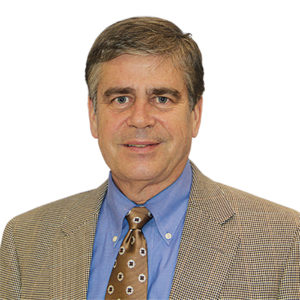The Turf Doc: Winter golf

Karl Danneberger
Needless to say, with winter’s arrival, the golf season ends for many northern golf courses. Although there are always a few die-hard golfers, the number of rounds fluctuates depending on weather conditions. If we have a mild winter with warmer-than-normal temperatures and snowfall below averages, the number of rounds increases.
It is difficult to predict the upcoming winter season, and with the high probability of a La Niña occurring, the unpredictability increases. The coronavirus will contribute to the unpredictability by enhancing the number of golfers who want to play. Increasing COVID-19 infections, hospitalizations and deaths predicted through the winter puts more restrictions on movement, and increased confinement may cause a buildup of demand.
Similar to this past spring and summer, about the only activity that allowed you to get outside with a low risk of infection was golf. The desire to play winter golf will drive more golfers to play under marginal to normal winter conditions because there are so few options.
The advantages to winter play if snow is absent and temperatures are not too cold is the cheaper green fees and fewer golfers. Given the conditions, a round is quicker, often, fewer holes are played due to amount of daylight and starts are pushed to later in the day due to frost. For single groups and groupings of more than four, winter rules (or COVID rules) have made winter golf the most open and free form of golf during the season.
Agronomically, keeping the golf course open for winter play is one of the more difficult decisions a golf course superintendent or owner will make. Turfgrass growth during the winter ceases. The lack of growth predisposes the turf to the potential of wear. Wear injury detrimentally impacts the turfgrass plant from the leaves to the crown to the roots. Additionally, wear areas, especially on tees and greens, are prone to Poa annua colonization.
Playing golf on dry unfrozen soil is probably the least likely to suffer wear injury. Precautions should still be taken to minimize wear injury. Reduce wear concentration on tees and greens by using temporary tees and greens. Locating tee markers at the start of the fairway and the temporary green at the end of the fairway is a standard recommendation.
If temporary tees or greens are not an option, disperse traffic and wear patterns. This can include moving tee markers frequently or not having tee markers, changing cups relatively frequently and chaining or fencing off concentrated wear areas. Most importantly, you should be out monitoring the course looking for developing wear areas. Monitoring increases in importance if carts are allowed.
As the winter progresses, playing golf on frozen soils will result in increasing likelihood of wear injury compared to unfrozen soils, but little soil compaction will occur. The practices previously described should remain in place.
The riskiest agronomic situation to allow for winter play is on thawing soil (unfrozen wet surfaces) with the soil frozen below the surface. Both wear and soil compaction can occur. If possible, golfing under this type of situation should be avoided, but the decision can change daily.
For example, greens that are frozen in the morning may support play but could begin to thaw as temperatures rise during the day. The option of having temporary greens available can allow for a quick “course correction” by switching to a temporary green.
From an agronomic standpoint, winter play is not good for turf. The repercussion from minimal growth is little if any recovery from traffic or wear. If the weather cooperates and COVID-19 remains, golfing like this past summer is one of the few options for people to participate in a sport. For those courses that will be open, set them up to be safe for the golfer and to minimize turf damage that could occur.










